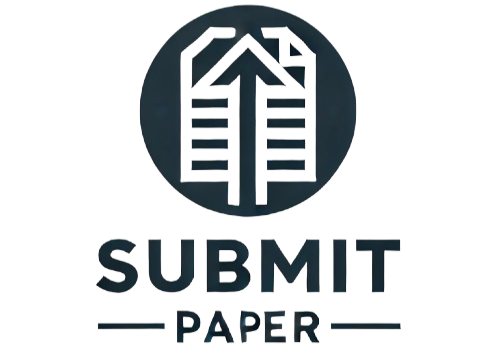Perencanaan Sistem Drainase Guna Mitigasi Bajir pada Taman Impian Jaya Ancol
Abstract
Special areas have a closed drainage system (existing drainage) when it rains there are still lots of puddles or runoff from the drainage that is not able to accommodate rainwater when it rains continuously, such as the incident in 2019 the Ancol Dreamland Park area could not accommodate rainwater. for a long time so that the Dream Park area flooded. The purpose of this study was to determine the planned rainfall, flood discharge, channel dimensions, and increase the water catchment area in the Ancol Dreamland Park area. The method used is by using Geopore ITB material. The results of this study showed that Q hydrology < Q Hydraulics Daily rain height plans for return periods of 2, 5, 10, 25, 50, and 100 years are 177.78 mm, 339.07 mm, 478.83 mm, 695.42 mm, 887.36 mm, 1107.69 mm and changes flow coefficient of 0.47 m3/s with channel dimensions 90 x 100 cm. to increase the water catchment area there are 13 channels throughout the Ancol Dreamland Park. So it can be concluded that flood control is carried out with 3 alternatives, namely changing channel dimensions, planning to change the flow coefficient, changing channel dimensions and geopore planning.
Keywords: Drainage System, Geopori ITB
Full Text:
PDFReferences
DAFTAR PUSTAKA
arafat, y. (2008). reduksi beban aliran drainase permukaan menggunakan sumur resapan. jurnal smartek.
basuki, winarsih, & adhyani, n. l. (2009). analisis periode ulang hujan maksimum dengan berbagai metode return period analyze maximum rainfall with three method) https://doi.org/10.29244/j.agromet.23.2.76-92
DR. IR. SURIPIN, M. E. (2004). DRAINASE. SISTEM DRAINASE PERKOTAAN YANG BERKELANJUTAN.
jamalludin, j., imam fatoni, k., & mustika alam, t. (2016). identifikasi banjir rob periode 2013 – 2015 di kawasan pantai utara jakarta. jurnal chart datum. https://doi.org/10.37875/chartdatum.v2i2.97
karuniastuti, n. (2014). teknologi biopori untuk mengurangi banjir dan tumpukan sampah organik. jurnal forum teknologi.
ningsih, d. h. u. (2012). metode thiessen polygon untuk ramalan sebaran curah hujan periode tertentu pada wilayah yang tidak memiliki data curah hujan. jurnal teknologi informasi dinamik.
NUGROHO, S. P. (2002). EVALUASI DAN ANALISIS CURAH HUJAN SEBAGAI FAKTOR PENYEBAB BENCANA BANJIR JAKARTA (IN BAHASA). JURNAL SAINS & TEKNOLOGI MODIFIKASI CUACA.
prabawadhani, d. r., harsoyo, b., seto, t. h., & prayoga, b. r. (2016). karakteristik temporal dan spasial curah hujan penyebab banjir di wilayah dki jakarta dan sekitarnya.jurnal sains & teknologi modifikasi cuaca. https://doi.org/10.29122/jstmc.v17i1.957
rifan n.s. lesawengan, dr. sri yulianto joko prasetyo, s.si., m. k. (2017).
PEMETAAN CURAH HUJAN MENGGUNAKAN METODE ISOHYET. UNIVERSITAS KRISTEN SATYA WACANA.
sasmito, s., triatmodjo, b., sujono, j., & harto, br, s. (2017). pengaruh kondisi awal kelengasan tanah terhadap debit puncakhidrograf satuan. jurnal teknik sipil. https://doi.org/10.24002/jts.v13i3.879
SINGH, V. P. (1998). LOG-PEARSON TYPE III DISTRIBUTION. HTTPS://DOI.ORG/10.1007/978-94-017-1431-0_15
STASIUN KLIMATOLOGI TANGERANG SELATAN. (2020). BULETIN BMKG PROVINSI BANTEN DAN DKI JAKARTA. IN BADAN METEOROLOGI, KLIMATOLOGI, DAN GEOFISIKA.
wahyuningtyas, a., hariyani, s., & sutikno, f. r. (2011). strategi penerapan sumur resapan sebagai teknologi ekkodrainase di kota malang (studi kasus : sub das metro). jurnal tata kota dan daerah.
wigati.r and wahyudin. (2013). analisis banjir sungai ciliwung (studi kasus ruas sungai lenteng agung-manggarai). jurnal fondasi.
DOI: https://doi.org/10.52447/jkts.v6i2.5463
Refbacks
- There are currently no refbacks.
Copyright Pusat Penelitian Fakultas Teknik
Universitas 17 Agustus 1945 Jakarta





